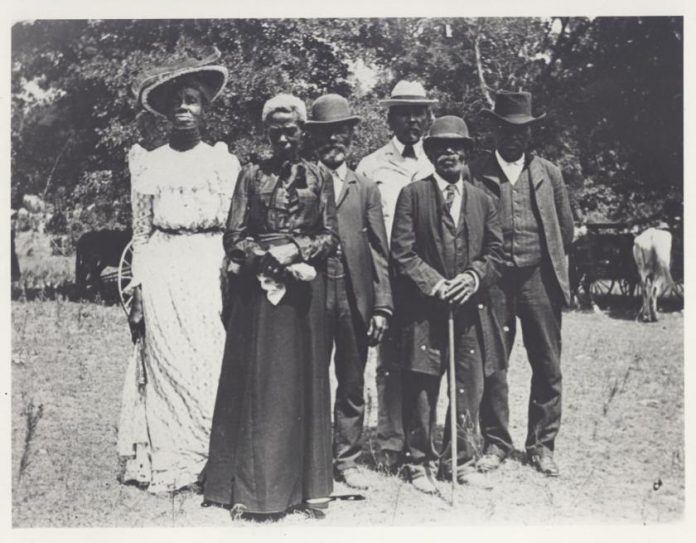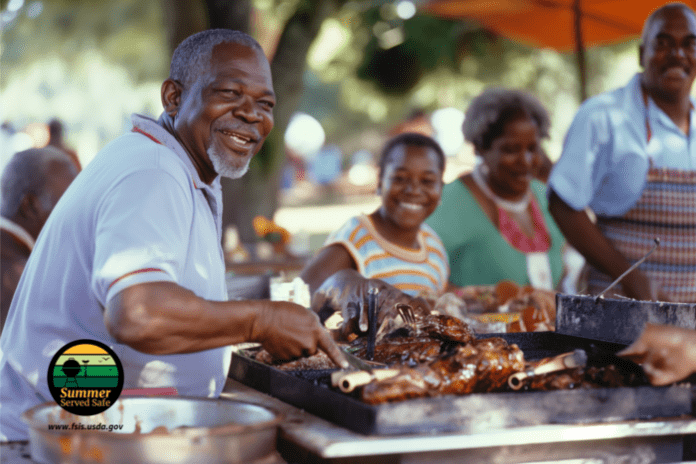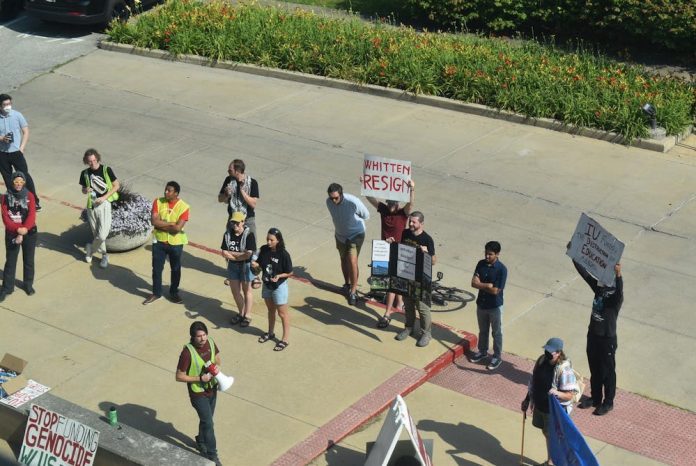|
|||||||||||||
|
|||||||||||||
|
|||||||||||||
|
HOT JOBS
Otters drop back and forth series opener
EVANSVILLE, Ind. – The Evansville Otters let one slip away against the Schaumburg Boomers, dropping the series opener at Bosse Field on Tuesday night 9-8.
The Otters (13-21) had the lead going into the top of the eighth inning, but the bullpen allowed the Boomers (21-12) to plate the go-ahead run and steal a win to begin Evansville’s nine-game home stand.
Schaumburg jumped on the board first with three runs in the third inning. The Otters answered with a pair in the bottom of the frame.
David Mendham and Randy Bednar both walked with one out. Later, Mendham scored on a balk and Pavin Parks drove in the other run with an RBI base hit to make it a 3-2 game.
The Boomers added another in the fourth before Mason White hit his second home run of the season over the right-center wall in the home half of the inning, once again bringing Evansville within one.
In the fifth, Evansville took their first lead of the game. Parks scored on a throwing error by the Boomers shortstop to get the ball rolling. Mike Peabody then singled to center field, driving in another pair of runs to take the lead 6-4. The final run came with a White single to score the fourth run of the inning.
In the eighth inning, the Boomers scored four runs to take an 8-7 lead.
Evansville gave up another unearned run in the ninth inning. Despite the attempted comeback, getting one back in the final inning, Evansville’s comeback ended a run short.
Jon Beymer (0-2) received the loss. Christian Lopez (3-2) pitched a one-two-three in the seventh and earned the win.
Parks led the offense with three hits. White and Peabody notched a pair of RBI each.
The Otters will look to shake the loss off tomorrow against the Boomers. The first pitch is scheduled for 6:35 p.m. CT. Coverage is available on the Otters Digital Network and FloBaseball.
Emancipation Of Slaves And Freedom Granted. On June 1865
Juneteenth commemorates General Order No. 3 which was issued by Major General Gordon Granger, who arrived in Galveston, Texas, on June 19, 1865. The issuing of this order and the arrival of Federal troops in Galveston effectively ended the Civil War and emancipated those confined to a life of slavery. Specifically, Granger made the following declaration in General Order No. 3:
“The people of Texas are informed that, in accordance with a proclamation from the Executive of the United States, all slaves are free. This involves an absolute equality of personal rights and rights of property between former masters and slaves, and the connection heretofore existing between them becomes that between employer and hired labor.”
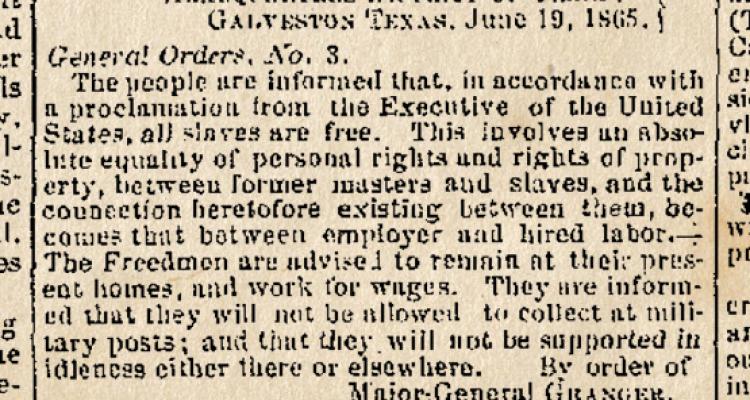
On January 1, 1863, President Abraham Lincoln’s Emancipation Proclamation declared “that all persons held as slaves” within the rebellious states “are, and henceforward shall be free.” Because the Southern Confederacy viewed itself as an independent nation, the Emancipation Proclamation did not immediately free all of the enslaved population because the Rebel governments would not enforce Lincoln’s proclamation. Texas became a stronghold of Confederate influence in the latter years of the Civil War as the slaveholding population ‘refugeed’ their slave property by migrating to Texas. Consequently, more than 50,000 enslaved individuals were relocated to Texas, effectively prolonging slavery in a region far from the Civil War’s bloodshed, and out of the reach of freedom—the United States Army. Only after the Union army forced the surrender of Confederate General Edmund Kirby Smith at Galveston on June 2, 1865, would the emancipation of slaves in Texas be addressed and freedom granted. On June 19, 250,000 enslaved people were freed.
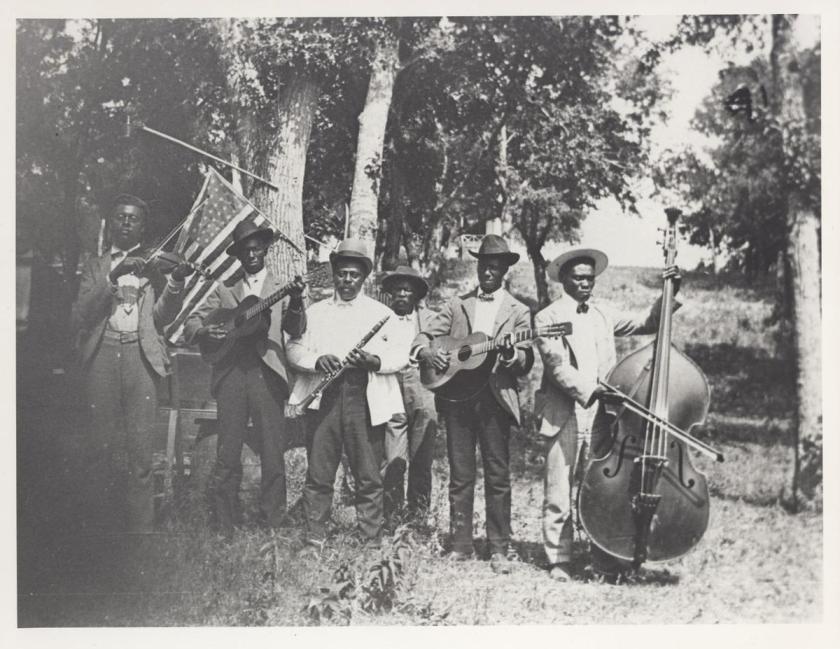
The issuing of General Order No. 3 on June 19, 1865, marked an official date of emancipation for the enslaved population. Nonetheless, those affected faced numerous barriers to their freedoms. General Order No. 3 stipulated that former slaves remain at their present homes, were barred from joining the military, and would not be supported in ‘idleness.’ Essentially, the formerly enslaved were granted nothing beyond the title of emancipation. The official end of slavery in the United States came with the ratification of the 13th Amendment in 1865.
After becoming emancipated, many former slaves left Texas in great numbers. Most members of this exodus had the goal of reuniting with lost family members and paving a path to success in postbellum America. This widespread migration of former slaves after June 19 became known as ‘the Scatter.’

On June 17, 2021, President Biden signed the Juneteenth National Independence Day Act, which officially made Juneteenth a federal holiday. This holiday is the first holiday to be approved since President Ronald Reagan signed a 1983 bill that approved Martin Luther King Jr. Day as a federal holiday. Juneteenth is also recognized as Freedom Day, Jubilee Day, Cel-Liberation Day, Second Independence Day, and Emancipation Day. Juneteenth celebrations often include public readings of the Emancipation Proclamation, singing traditional songs, and reading of works by noted African American writers. Celebrations also take the form of rodeos, street fairs, cookouts, family reunions, park parties, historical reenactments, and Miss Juneteenth contests.
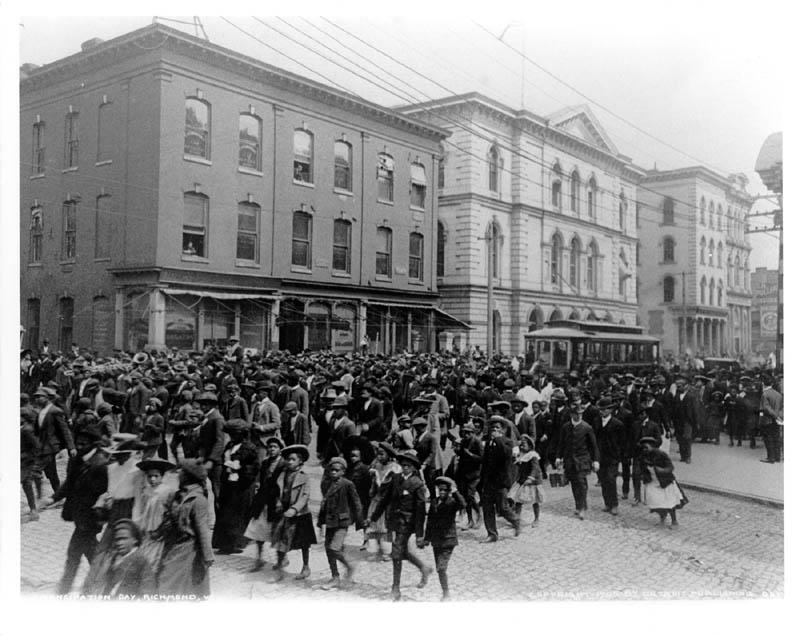
RESULTS OF JUNE 18 DIVING HEATS
Three Hoosiers have a strong chance of qualifying for Paris from the two synchronized events taking place Tuesday. 2020 Olympic medalists Jessica Parratto and Andrew Capobianco are competing in day two’s events.
- Parratto and partner Delaney Schnell gave themselves a platform in the women’s synchronized 10-meter prelim, scoring 303.90 points — nearly 60 points better than the second-place pairing.
- Capobianco and current IU collegiate diver Quinn Henninger are part of a tight battle in the men’s synchronized 3-meter event. The Hoosier duo sits second after the morning with a score of 403.95. Their total sits just 15 hundredths of a point behind Gregory Duncan and Tyler Downs but 6.54 ahead of Jack Ryan and Grayson Campbell.
- Capobianco and Henninger are attempting the highest total degree of difficulty of the field, giving them the potential to earn a greater maximum score from their list.
- Next session: Parratto, Henninger, and Capobiano will compete in their respective finals on Tuesday night with Olympic qualification on the line. The women’s 10-meter synchro final will begin at 7:30 p.m. ET, followed by the men’s 3-meter synchro at 9:15 p.m.
Results
Women’s synchronized 10-meter
- 1. Jessica Parratto (Schnell) – 303.90
Men’s synchronized 3-meter
- 2. Quinn Henninger/Andrew Capobianco – 403.95
Keeping Juneteenth Barbecues Flavorful & Food Safe
Keeping Juneteenth Barbecues Flavorful & Food Safe
JUNE 19, 2024
Juneteenth, also known as Freedom Day or Emancipation Day, commemorates the end of slavery in the United States. This historic day is celebrated through community gatherings, parades, music, storytelling, dance, and barbecues. Food is central to many cultural celebrations and it is essential to ensure that the food we share is not only flavorful and delicious but also safe to eat. When heading outdoors to barbecue, follow these important food safety steps. Wash hands for at least 20 seconds before and after handling raw meat, poultry, and eggs. Clean and sanitize common surface areas often. Use separate cutting boards for raw meat and poultry and ready foods to eat to avoid cross-contamination during food preparation.
When celebrating with food outdoors, keep food out of the Danger Zone (between 40 – 140 degrees F) or keep hot foods HOT and cold foods COLD. When foods are left sitting in the Danger Zone at temperatures between 40 – 140 degrees F, harmful bacteria can grow and create a danger to your friends and family. Traditional cooked dishes such as collard greens, jambalaya, okra, catfish, and mac & cheese can be kept hot (140 degrees F or above) by placing them in chafing dishes or warming trays. Traditional cold dishes such as potato salad, deviled eggs, fruit and vegetables can be nestled on top of a bed of ice (40 degrees F or below). Perishable foods that are not accompanied by a proper heating or cooling source must be stored and refrigerated within 2 hours, or 1 hour if the weather is over 90 degrees F.
If you’re headed to the grill, be sure to cook all meat and poultry to a minimum safe internal temperature as measured with a food thermometer.
- Finger-licking slabs of barbecued ribs (pork or beef) must remain on the grill until they reach an internal temperature of 145 degrees F, and then rested for three minutes before digging in.
- Juicy burgers should reach an internal temperature of 160 degrees F. Insert the food thermometer through the side of the patty, into the thickest part, for the most accurate reading.
- Savory spiced jerk chicken should reach an internal temperature of 165 degrees F.
Before the Juneteenth fireworks can be seen in the sky, leftovers from the celebration should be properly stored in shallow containers and placed in the refrigerator to avoid sitting in the Danger Zone.
Not barbecuing this Juneteenth? Perhaps you are supporting a black-owned food business and ordering take-out instead. Remember the 2-hour rule and learn more about Safe Handling of Take-Out Foods.
By following these food safety tips, we can ensure that our Juneteenth celebration reflects freedom and unity and is a safe and memorable occasion for all.
Landmark Economic Impact Study Reveals Unprecedented Growth in Evansville’s Health and Life Sciences Sector
EVANSVILLE, Ind. (June 19, 2024) – Today, Evansville Regional Economic Partnership (E-REP) proudly shares the findings of the first-ever Economic Impact of the Stone Family Center for Health and Life Sciences, a multi-institutional collaborative Center that has become the focal point of progress in Evansville region’s health and life sciences sector.
Key highlights from the study include:
- Fastest Growing Health and Life Sciences Sector: The study reveals that the Evansville region boasts the fastest growing health and life sciences sector among peer markets (Chattanooga, TN; Greenville, SC; Kansas City, MO; Charlotte, NC). This rapid growth is a testament to the impact of initiatives like the Stone Family Center for Health and Life Sciences in propelling the region into a hub of innovation and excellence.
- $1 Billion Contribution to the Regional Economy: Between 2013 and 2022, the combined forces of healthcare, education, and technology within the health and life sciences sector have contributed nearly $1 billion to the regional economy. This economic impact underscores the significance of the sector in driving prosperity and development in the Evansville region.
- Educating Tomorrow’s Leaders: The Stone Family Center for Health and Life Sciences plays a pivotal role in shaping the future of the health and life sciences sector. Currently, the center is educating approximately 500 graduate-level students who are poised to become leaders and innovators in healthcare, research, and technology sectors.
- Evansville’s Ascent to Statewide and National Leadership: The study foresees a bright future for the Evansville region, positioning it as a statewide and national leader in child and adolescent psychiatry. The Stone Family Center’s commitment to excellence and collaboration is propelling the regional healthcare sector to new heights, ensuring its prominence on the state-wide and national stage.
E-REP believes that the Stone Family Center for Health and Life Sciences is a catalyst for positive change, not only in the Evansville region but also in the broader landscape of healthcare and life sciences across the state and country. The center’s commitment to education, research, an innovation is setting the stage for a dynamic future where the Evansville region plays a leading role in shaping the health and well-being of communities.
Protesters disrupt IU Board of Trustees meeting
Protesters disrupt IU Board of Trustees meeting
JUNE 18, 2024
It was organized by the IU Divestment Coalition, Indiana Graduate Workers Coalition, Jewish Voice for Peace Indiana and the IU Faculty Rapid Response Group. They gathered outside for a rally to demand the board terminate IU President Pamela Whitten’s presidency.
Protesters began to convene outside around 9 a.m., and 20 minutes into the start of the meeting, they started to chant. At its peak, the outdoor protest had about 60 participants. Protesters wore stickers reading “no confidence” and carried signs, including one that read, “Whitten resign.”
Several demonstrators outside gave short speeches using the megaphone. They called for Whitten to be fired from her position over a variety of grievances and reminded the crowd that the IU Board of Trustees has the authority to terminate her five-year contract at any time.
Other protesters outside described their experiences during the arrests that took place at Dunn Meadow on April 25 and 27. They spoke on being detained and even injured by police while being arrested.
IU professor emeritus Russ Skiba said over the megaphone that IU needs a president who will defend the university against SEA 202, which will increase state legislative oversight on Indiana’s public universities and change criteria for tenure. It takes effect July 1.
IU professor Heather Akou, who was arrested in Dunn Meadow on April 27, described her experience and criticized police at other pro-Palestine protests around the country. She said she felt as both a professor and a human being, that she had a responsibility to speak up.
“I can’t work in these conditions, and I trust that you feel the same,” Akou said.

A protester yells out during a rally calling for the termination of IU President Pamela Whitten outside the Board of Trustees meeting June 14, 2024, at Memorial Stadium in Bloomington. At its peak, around 60 protesters attended the rally outside. IU-Bloomington to add chancellor and faculty fellow positions
Around 10 pro-Palestine protesters sat inside Henke Hall with signs, including ones that read, “IU: Divest from Crane” and “History is watching.” When Whitten began to deliver her report to the board, protesters in the audience started to stand up one at a time and shouted statements condemning IU’s partnership with Naval Surface Warfare Center – Crane Division and IU’s decision to send Indiana State Police to arrest protesters April 25 and 27.
“Ma’am, the trustees don’t condone that,” trustees chair Quinn Buckner said regarding the first protester shouting.
Officials escorted all protesters who shouted outside.
According to the rules for trustees meeting attendees, people may not disrupt the meeting with noisemakers, demonstrations or chanting.
After three more protesters shouted, Buckner asked protesters to refrain from shouting.
“We don’t disrespect each other this way, so I please ask that you refrain from standing with your statements,” Buckner said. “If you’ve got a sign, that’s great. But standing and interrupting another human being is not the way to solve any of the problems.”

Protesters holding signs chant “Free, free Palestine” after others were escorted out for interrupting the Board of Trustees meeting with speeches June 14, 2024, inside Henke Hall in Bloomington. Outside, other protesters gathered as a protest organized by the grad union and could be heard inside the room during the meeting, as well.
Whitten resumed after Buckner’s statement, and then another protester stood and shouted. Buckner then said the remainder of Whitten’s remarks would be added to the meeting’s minutes. Chairs of the University Faculty Council then began their reports to the board. Protesters continued to intermittently interrupt the speakers.
Around 10:10 a.m., Buckner announced he would be adjourning the meeting.
“I’m going to adjourn this meeting. We’re going to move because we have business to do,” Buckner said. “I get what others are feeling, I get it, but we need to do business, and I want to make sure you’re heard.”
The trustees, Whitten, UFC chairs and other officials moved into a different room and resumed around 15 minutes later, livestreaming their discussion into Henke Hall.
“To ensure IU’s campuses consistently welcome the freedom of expression, we have long applied conditions related to the time, place and manner of such displays to ensure the safety of the campus community and the continuity of our academic mission,” IU Executive Director for Media Relations Mark Bode said in a statement to the Indiana Daily Student. “Because today’s demonstration clearly disrupted that mission, the meeting was reconvened in a different room and live-streamed to the attending public to allow the Board of Trustees to continue the business of the university. The Board was undeterred and carried on with a productive agenda for the people of Indiana.”






